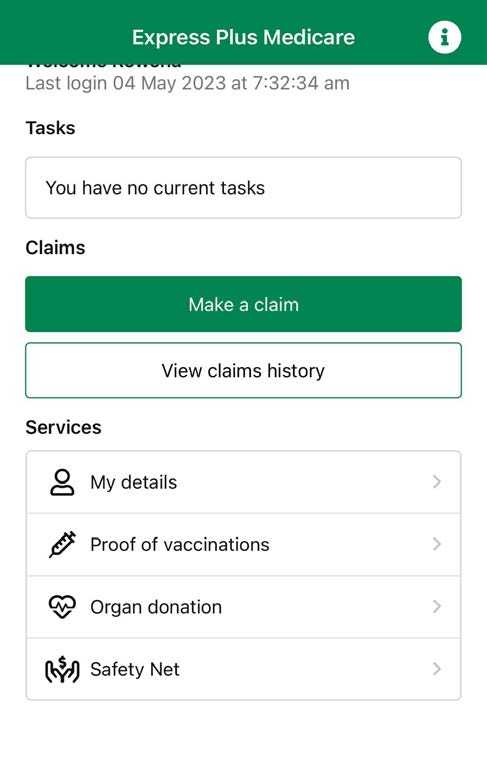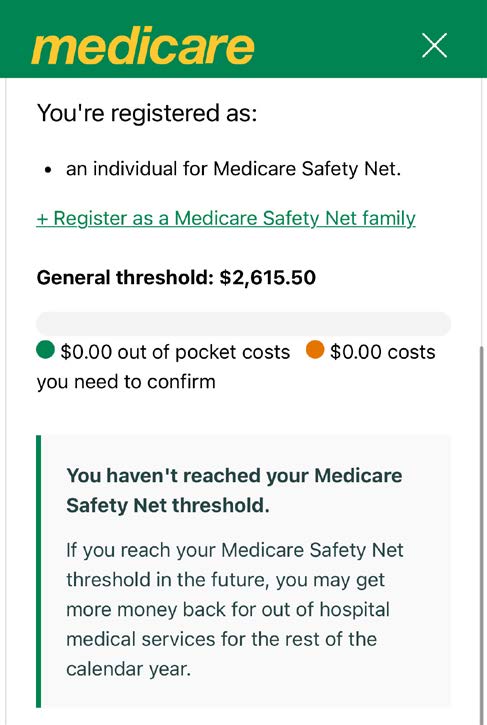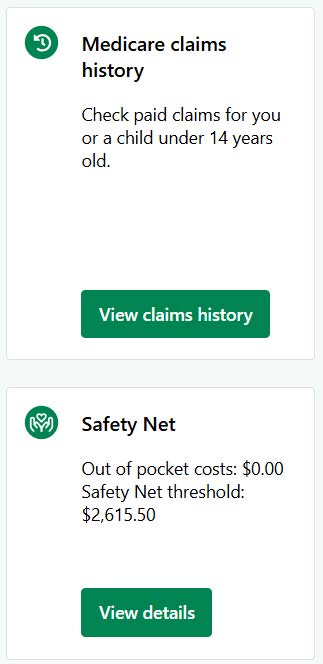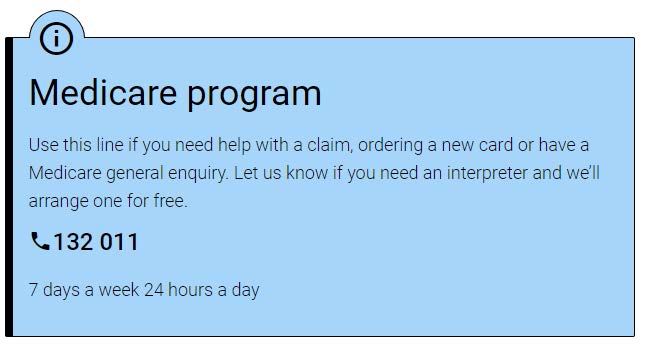- Patients
- Patient resources
- Payment information

Payment information
Your billing explained
An overview of billing for radiation therapy
- Radiation treatment is typically an out of hospital (‘outpatient’) service, with a cost involved for your care
- Private health funds do not cover outpatient services
- Medicare covers approximately 80% of treatment costs (depending on your position within your Medicare Safety Nets)
- Following your initial doctor consult, you will have a dedicated fee conversation with a team member who will be able to provide you with an estimate for the cost of your care and will go through billing, invoicing and Medicare rebates in detail
- Your exact out-of-pocket costs depend on a number of factors including your personal treatment plan, complexity and your position within your Medicare Safety Nets
Invoicing and Medicare
Following your fee conversation, you will be provided with an estimate for your total cost of care. Payments are broken into a number of separate invoices throughout the course of your treatment. Paid invoices are usually reimbursed within 48 hours of a claim being submitted to Medicare.
| Step 1: Invoice | You will be invoiced for the services received, as you receive them. This will include invoices for:
|
| Step 2: Payment | You will be invoiced for the services received, as you receive them. Reimbursement claims cannot be made until an invoice is paid in full. |
| Step 3: Claiming: | After each invoice is paid in full, GenesisCare will submit a claim to Medicare so you can be reimbursed your eligible Medicare benefits. |
| Step 4: Reimbursement | Medicare reimburses you directly into your bank account, normally within 48 hours of a claim being submitted. Exceptions may apply. |
* Simulation and dosimetry are the services required to be performed before any course of radiotherapy can commence. During simulation, your treatment area is scanned and measured. Dosimetry (sometimes referred to as planning) is the behind-the-scenes work your doctor and radiation therapist do after simulation to design your personal course of treatment.
Extended Medicare Safety Net
What is the Extended Medicare Safety Net?
The Extended Medicare Safety Net (EMSN) is an Australian Government initiative designed to provide additional financial relief for individuals and families who have high out-of-pocket medical costs for out-of-hospital services. It reduces Out-Of-Pocket (OOP) expenses once a patient reaches a certain threshold of medical costs within a calendar year.
If you’re enrolled in Medicare you’re eligible for the EMSN. Each time you pay an out of pocket cost, it’s calculated towards the EMSN threshold.
How does this impact my OOP costs?
Once you hit the EMSN threshold you will recieve an extra rebate on the gap between the standard Medicare benefit and certain treatment costs. This will reduce your final OOP expenses.
How to find your position on the EMSN?
To get a more accurate estimate of your OOP costs, it’s helpful if you arrive to your fee conversation knowing your position on the EMSN. You can get this from the Medicare app on your mobile phone, from your myGov account or by phoning Medicare directly. Unfortunately, it’s difficult for healthcare providers to get this information on behalf of patients.
Step 1: Log into your Medicare app, and go to Safety Net

Step 2: Your position should be easily visible

Step 1: Log in to myGov to access Medicare through linked services

Step 2: Your position should be easily visible

Step 1: Dial 132 011 and follow the prompts

When does the EMSN Reset?
Medicare Safety Nets resets every calendar year, 1 January – 31 December. This means your Medicare rebate will be reduced from 1 January until you reach the Extended Medicare Safety Net threshold again.
Where can I get more information?
For more information on the EMSN visit:
- Extended Medicare Safety Net on the Services Australia website
- Medicare Safety Nets on the Department of Health and Aged Care website
Finances made simple with GenLend
A cancer diagnosis can be confronting, not to mention the added burden of managing finances. To help alleviate some of the pressure that comes with the up-front costs associated with radiation therapy, GenesisCare has introduced a product called GenLend. The aim of GenLend is to make things simpler for you financially, so that you can focus on your health.
- It is a completely interest free and fee free way of paying for your treatment
- You can manage your repayments in a more predictable way during your treatment course with direct debits generally occurring every Friday as set out in your GenLend Payment Schedule
- No proof of income required
- No credit checks required
- We pay the full price of your treatment invoices up front on your behalf using the loan facility established by GenLend. This will allow you some extra time to get your finances in order prior to making any repayments via direct debit
- Your GenLend repayment schedule has generally been designed to align to dates when you are likely to have received your Medicare rebates. We hope that this feature helps to reduce any stress if your actual Medicare rebates are different from what was estimated
- A separate finance entity in the GenesisCare corporate structure pays for your treatment course invoices upfront each week after you attend an appointment
- Your repayments are made via direct debit each Friday during your treatment course
- To pay by GenLend, you will be asked to sign a GenLend Agreement and Direct Debit form
- You will be given a GenLend Payment Schedule that is bespoke to your treatment. It will set out the timing for your treatment invoices and your repayments
- You won’t pay anything until your treatment commences, and you will only pay for the treatment that you have received
- If your treatment course changes, or is deferred, a dedicated GenesisCare team member will be able to assist you with a revised GenLend Payment Schedule
- If you do not complete your treatment course or your GenLend Agreement is otherwise terminated early, you will not be responsible for repaying treatment invoices in that treatment course that were not received
For patients receiving outpatient radiation therapy at GenesisCare. To be eligible to participate you must:
- be enrolled with Medicare so as to be eligible to receive Medicare rebates in respect of your treatment;
- hold an Australian Bank Account that can be direct debited; and
- be registered for the Medicare Safety Net
Please read our Terms and Conditions here.
Read next

News room - What's been happening
From new centers and technologies to the latest innovations in care, stay on top of what we are doing.

Who we are
We are 5000 highly trained healthcare professionals and support staff across Australia, the U.K., Spain, and the United States, designing innovative treatments and care for people with cancer and heart disease.

Dealing with loss
Dealing with loss can be a challenging and difficult time. We’ve prepared this page to help you understand how you may be feeling in the days and weeks after a loss.

Our centres
Across Australia, the UK, the USA, and Spain we have over 440 oncology, cardiology & sleep medicine centres.

You are leaving our website
You are now leaving our website. GenesisCare do not control this content and therefore are not responsible for its accuracy or reliability.

You are leaving our website
You are now leaving our website. GenesisCare do not control this content and therefore are not responsible for its accuracy or reliability.
Disclaimer:
This website is provided for information purposes only. Nothing on this website is intended to be used as medical advice, or to diagnose, treat, cure or prevent any disease. It should not be used as a substitute for your own health professional's advice. Any medical procedure or treatment carries risks. Before proceeding with treatment, you should discuss the risks and benefits of the treatment with an appropriately qualified health practitioner. Individual treatment outcomes and experiences will vary.
